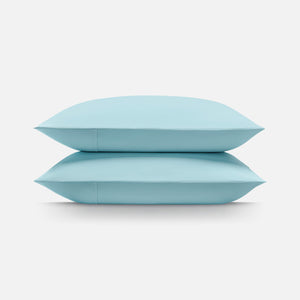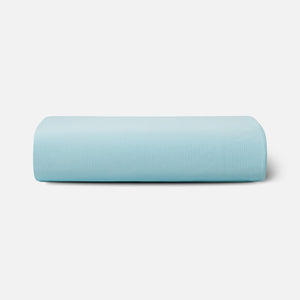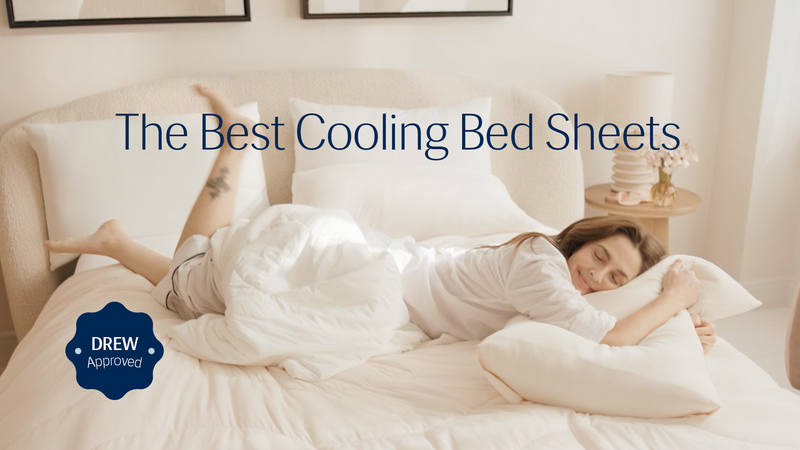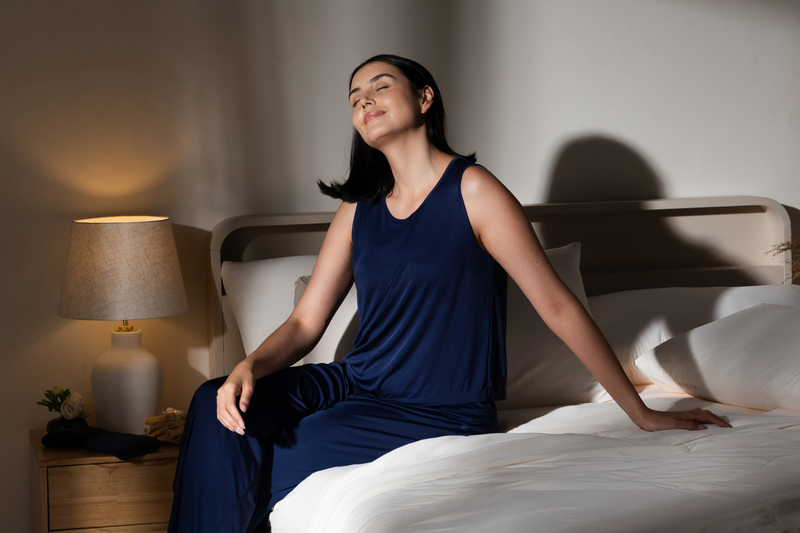Top 5 Best Hypoallergenic Sheets in 2025
If you wake up sneezing, coughing, or dealing with itchy skin, switching to hypoallergenic bedding can make a noticeable difference. These sheets are designed to limit exposure to common allergens that trigger symptoms or aggravate conditions like asthma and eczema.
Choosing the best hypoallergenic sheets means understanding which fabrics and features actually help. This guide will walk you through the top options, the most effective hypoallergenic materials, and show other ways to reduce allergens in your sleep environment.
What Are Hypoallergenic Bedding?
Hypoallergenic sheets, like the ones from Rest, are made to cut down on allergens like dust mites, mold, and pet dander that can irritate your skin or lungs. They use fabrics that naturally resist these irritants or prevent their growth, helping you sleep with less congestion, itching, or sneezing.
Materials such as cotton, silk, bamboo, and linen are popular because they combine breathability with hypoallergenic properties, making them a solid choice for anyone looking to improve nighttime comfort and overall sleep quality.
Best Hypoallergenic Sheets
1. Rest Evercool + Cooling Flat Sheet
The Rest Evercool Cooling Flat Sheet combines cooling performance with hypoallergenic design, making it a strong choice for anyone dealing with allergies or sensitivities. The fabric is smooth and breathable, designed to regulate temperature and reduce overheating throughout the night. Its hypoallergenic qualities also help create a cleaner sleep surface by limiting exposure to common irritants like dust.

This sheet is lightweight yet durable, holding up well to regular washing without losing its softness. While it works beautifully as a standalone option, it is also a natural fit for pairing with other Evercool bedding for a complete sleep upgrade.
Pros:
-
Breathable cooling fabric
-
Hypoallergenic protection
-
Soft and durable.
Cons:
-
Only includes the flat sheet
2. Rest Evercool + Cooling Fitted Sheet
The Rest Evercool Cooling Fitted Sheet is designed to stay securely in place while offering the same cooling and hypoallergenic benefits as the flat sheet. Its snug fit helps eliminate bunching and shifting, which can make sleep more comfortable. The material promotes airflow, helping to regulate body temperature while creating a sleep space that is resistant to dust and allergens.

It is especially helpful for those who want their mattress to be fully covered in hypoallergenic protection. With its cooling performance and easy maintenance, this fitted sheet is both practical and supportive of better sleep quality.
Pros:
-
Stays in place well
-
Hypoallergenic and cooling
-
Easy to maintain.
Cons:
-
Just the fitted sheet
3. Rest Evercool + Cooling Sheet Set
The Rest Evercool Cooling Sheet Set provides a complete package for anyone looking for hypoallergenic protection and comfort. With both flat and fitted sheets plus pillowcases, it offers full coverage for your sleep environment. The awesome cooling properties make it a great option for hot sleepers, while the hypoallergenic design helps protect against common irritants that can trigger allergies.

This set is ideal for creating an all-around healthier and more comfortable sleep setup. It balances softness, durability, and performance, while also saving the effort of having to buy individual pieces separately.
Pros:
-
Complete set with hypoallergenic and cooling benefits
-
Durable and soft fabric
-
Convenient all-in-one solution.
Cons:
-
Limited color choices.
4. Rest Evercool + Cooling Starter Sheet Set
The Rest Evercool Cooling Starter Sheet Set is a more affordable option for those wanting to try hypoallergenic sheets without investing in the full set. Typically including essentials like a fitted sheet and pillowcases, this set offers the same breathable, cooling fabric while protecting against allergens. It is a practical entry point for creating a healthier sleep space.

The sheets are lightweight, soft, and easy to care for, making them versatile for everyday use. While not as comprehensive as the larger sheet set, the starter set still delivers strong performance for allergy-prone and heat-sensitive sleepers.
Pros:
-
More budget-friendly option
-
Hypoallergenic fabric
-
Cooling comfort.
Cons:
-
Fewer pieces than the full sheet set
5. SONORO KATE Luxury Microfiber Sheet Set
The SONORO KATE Luxury Microfiber Sheet Set is a well-rounded, hypoallergenic option that combines everyday practicality with softness and affordability. The microfiber material helps block common allergens such as dust mites and pet dander while offering a silky feel that many sleepers find comfortable. With deep pockets and strong elastic, the fitted sheet stays secure throughout the night.
These sheets also stand out for their wrinkle-resistant design and easy maintenance, making them an appealing choice for households that want convenience without sacrificing comfort. Available in a wide range of colors and sizes, they provide flexibility and style at a much lower price point than specialty cooling sheets.
Pros:
-
Affordable and hypoallergenic
-
Soft microfiber feel
-
Wrinkle-resistant and easy care.
Cons:
-
Microfiber may not be as cooling as other fabrics
-
Less luxurious feel than higher-end sheets.
Best Hypoallergenic Bedding Materials
Bamboo Sheets
Bamboo sheets are soft, smooth, and surprisingly breathable. They naturally fight dust mites and mold, which makes them great for sensitive skin. They also handle moisture well and keep you cool, so you’re less likely to wake up sweaty or itchy. On top of that, bamboo grows fast, so it’s an eco-friendly option if sustainability matters to you.
Silk Sheets
Silk feels incredible on the skin and naturally keeps allergens away. It’s especially nice if you deal with eczema or other sensitivities because it’s gentle and soothing. True silk can be pricey, and some people worry about ethical sourcing, but there are plant-based options that give a similar feel without the same concerns.
Lyocell (Tencel) Sheets
Lyocell, usually sold as Tencel, comes from eucalyptus trees and is soft, breathable, and moisture-wicking. It helps keep your temperature steady and resists common allergens like dust mites. It’s also made in a way that’s more environmentally friendly than many other fabrics, which makes it a nice middle ground if you want comfort, durability, and allergy relief.
Cotton Sheets
Cotton is a classic, and high-quality types like Egyptian cotton can be hypoallergenic. It’s soft, breathable, and gentle on the skin, which helps reduce irritation. The downside is that traditional cotton uses a lot of water and energy, so if sustainability is important, you might want to lean toward bamboo or lyocell instead.
How to Reduce Allergens in Your Sleeping Space
Keeping allergens under control in your bedroom doesn’t have to be complicated. A few consistent habits can make a big difference:
1. Control Humidity
Dust mites and mold thrive in damp conditions, so keeping moisture in check is key.
-
Use a dehumidifier to keep indoor humidity around 30 to 50 percent.
-
If you don’t have a dehumidifier, open a window daily to let fresh air circulate and reduce dampness.
2. Wash Bedding Regularly
Frequent washing removes allergens that collect in sheets and pillowcases.
-
Launder bedding in the hottest temperature safe for the fabric to kill dust mites and mold.
-
For delicate fabrics like silk or bamboo, follow care instructions but keep a consistent washing routine.
3. Keep Yourself Clean Before Bed
Showering or bathing at night removes pollen, dust, and other allergens from your skin and hair, helping keep your sheets cleaner and allergen-free.
4. Limit Pet Exposure
Pets can bring fur, dander, and outdoor allergens into your bedding.
-
Keep pets out of your bed if possible.
-
If they sleep in your bedroom, maintain strict cleaning habits to reduce allergen buildup.
5. Avoid Eating in Bed
Crumbs and food residues attract dust mites and bacteria. If spills happen, wash your bedding promptly to prevent allergens from settling in.
6. Invest in Hypoallergenic Bedding
Sheets, pillowcases, and duvet covers made to block allergens make a big difference. Look for materials and weaves that resist dust mites and mold. Many of these options are breathable and temperature-regulating, giving extra comfort for sensitive skin or respiratory issues.
How to Pick Hypoallergenic Sheets
Soft and Gentle Feels Matter
Sheets should feel soft on your skin, especially if you react easily to allergens. Smooth fabrics like bamboo, eucalyptus silk, or high-quality cotton are easy on the skin and help avoid irritation. Thread count can make a difference, but softness and comfort are what really count.
Pick Fabrics That Fight Allergens
Some materials naturally keep allergens like dust mites and mold at bay. Bamboo and cotton are good choices because they don’t trap dust and moisture as much as synthetic fabrics. That can make a noticeable difference if you wake up sneezing or itchy.
Organic Can Be a Plus
Organic sheets skip the chemicals and pesticides found in conventional options, which can irritate sensitive skin. They often breathe better too, helping you stay comfortable through the night. Synthetic sheets like polyester can trap heat and sometimes contain additives that aren’t ideal if allergies are a concern.
Breathable and Dry
Look for sheets that let air flow and wick away moisture. Keeping your sheets dry makes it harder for dust mites and mold to grow, while also helping you stay comfortable if you tend to sweat at night.
Check for Quality Labels
Trusted certifications can give you peace of mind. Labels for organic fabrics or chemical-free production show the sheets have been tested for safety and allergen resistance, which helps if you’re sensitive to common triggers.
Conclusion
Finding the right hypoallergenic sheets can actually make a big difference if you’re sensitive to dust, pollen, or pet dander. The right fabrics help keep those triggers away while still feeling soft and comfortable to sleep on. Bamboo, silk, lyocell, and cotton all work well, each with their own benefits. Bamboo and lyocell breathe and wick moisture, silk is smooth and gentle, and cotton is simple and easy to care for.
The sheets that work best are the ones that let you sleep through the night without irritation. You can try a full set for everything covered or just start with a fitted sheet to see how it feels. Keeping sheets clean and picking the right fabric helps make your bedroom a place where allergies aren’t constantly bothering you and sleep feels more restful.





